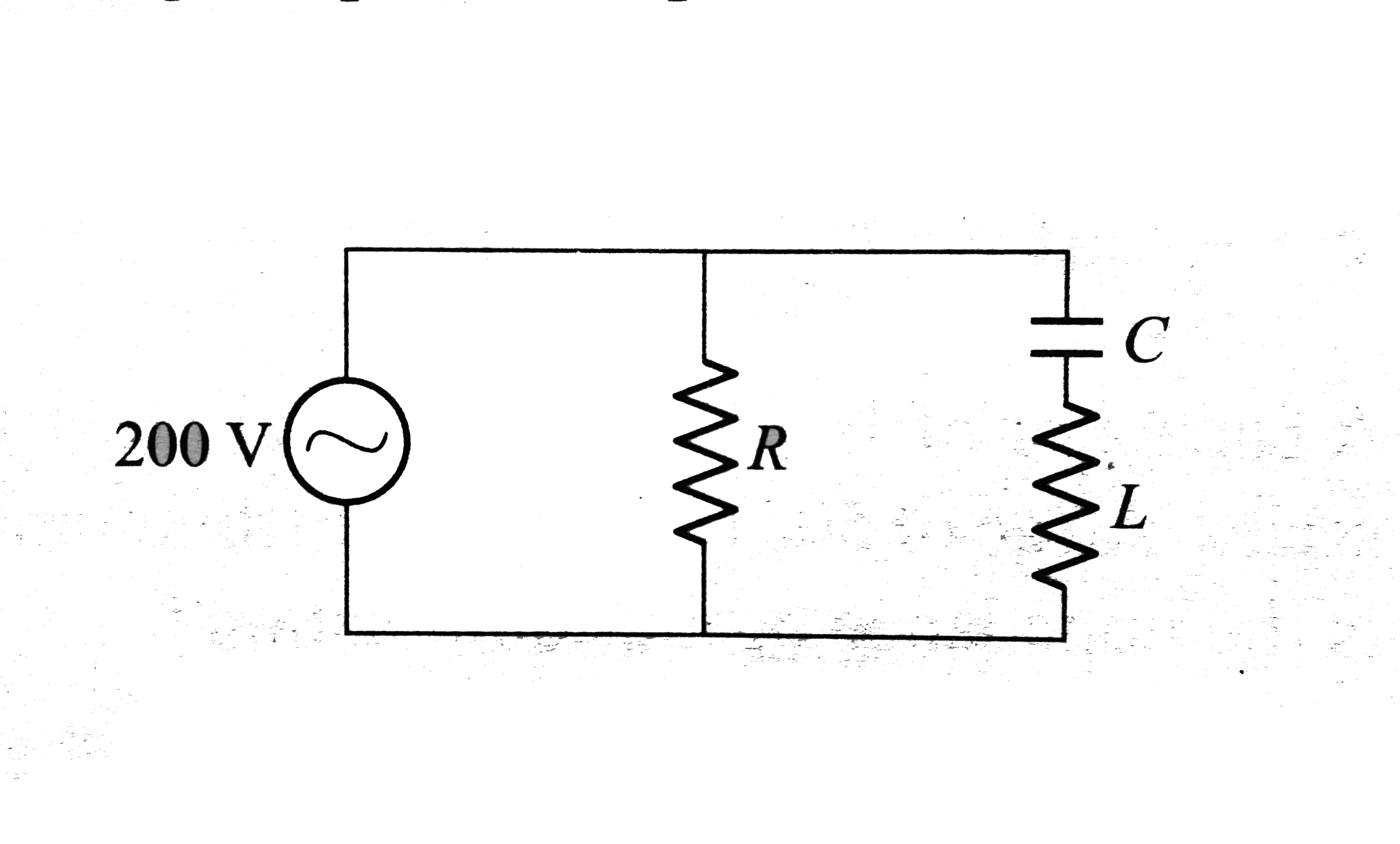Two identical thin metal strips one of aluminium and the other of iron are riveted together to form a bimetallic strip. The temperature is raised by 50∘C. If the central planes of the two strips are separated by 2nm and the coefficients of thermal expansion of aluminium and iron are respectively 30×10−6/∘C and 10×10−6/∘C the average radius of curvature of the bimetallic strip is about
50 cm
100 cm
150 cm
200 cm
The correct Answer is:D
To solve the problem of finding the average radius of curvature of a bimetallic strip made of aluminum and iron when the temperature is raised, we can follow these steps:
Step 1: Understand the Given Data
- Coefficient of thermal expansion of aluminum, αAl=30×10−6/∘C
- Coefficient of thermal expansion of iron, αFe=10×10−6/∘C
- Temperature increase, ΔT=50∘C
- Separation between the central planes of the two strips, D=2nm=2×10−9m
Step 2: Calculate the Difference in Coefficients of Thermal Expansion
The difference in the coefficients of thermal expansion is given by:
Δα=αAl−αFe
Substituting the values:
Δα=(30×10−6)−(10×10−6)=20×10−6/∘C
Step 3: Use the Formula for Radius of Curvature
The formula relating the separation D, the radius of curvature R, the difference in thermal expansion coefficients Δα, and the temperature change ΔT is:
D=R⋅Δα⋅ΔT
Rearranging this gives:
R=DΔα⋅ΔT
Step 4: Substitute the Known Values
Substituting the known values into the equation:
R=2×10−9(20×10−6)⋅(50)
Step 5: Calculate the Radius of Curvature
Now calculate R:
R=2×10−9(20×10−6)⋅(50)=2×10−91×10−3=2×10−6m
Converting to centimeters:
R=2×10−6m=0.0002m=0.02cm
Step 6: Final Result
The average radius of curvature of the bimetallic strip is approximately:
R≈2m=200cm
- Coefficient of thermal expansion of aluminum, αAl=30×10−6/∘C
- Coefficient of thermal expansion of iron, αFe=10×10−6/∘C
- Temperature increase, ΔT=50∘C
- Separation between the central planes of the two strips, D=2nm=2×10−9m
The difference in the coefficients of thermal expansion is given by:
Δα=αAl−αFe
Substituting the values:
Δα=(30×10−6)−(10×10−6)=20×10−6/∘C
The formula relating the separation D, the radius of curvature R, the difference in thermal expansion coefficients Δα, and the temperature change ΔT is:
D=R⋅Δα⋅ΔT
Rearranging this gives:
R=DΔα⋅ΔT
Substituting the known values into the equation:
R=2×10−9(20×10−6)⋅(50)
Now calculate R:
R=2×10−9(20×10−6)⋅(50)=2×10−91×10−3=2×10−6m
Converting to centimeters:
R=2×10−6m=0.0002m=0.02cm
The average radius of curvature of the bimetallic strip is approximately:
R≈2m=200cm
Topper's Solved these Questions
- DAILY PRACTICE PROBLEMBook:RESONANCE ENGLISHChapter:DAILY PRACTICE PROBLEMExercise:DPP No.57
Explore 9 Videos
- DAILY PRACTICE PROBLEMBook:RESONANCE ENGLISHChapter:DAILY PRACTICE PROBLEMExercise:DPP No.58
Explore 20 Videos
- DAILY PRACTICE PROBLEMBook:RESONANCE ENGLISHChapter:DAILY PRACTICE PROBLEMExercise:DPP No.55
Explore 9 Videos
- CURRENT ELECTRICITYBook:RESONANCE ENGLISHChapter:CURRENT ELECTRICITYExercise:High Level Problems (HIP)
Explore 19 Videos
- ELECTRO MAGNETIC WAVESBook:RESONANCE ENGLISHChapter:ELECTRO MAGNETIC WAVESExercise:Exercise 3
Explore 27 Videos
Similar Questions
A shell of mass 4kg moving with a velocoity 10m/s vertically upward explodes into three parts at a height 50m from ground. After three seconds, one part of mass 2kg reaches ground and another part of mass 1kg is at height 40m from ground. The height of the third part from the ground is : [g=10m/s2]
View SolutionIn the circuit shown in fig. XC=100Ω,(XL)=200ΩandR=100Ω. The effective current through the source is

View SolutionThe circuit was in the shown state for a long time. Now if the switch S is closed then the net charge that flows through the switch S, will be

View SolutionA galvanometer having 30 divisions has a current sensitivity of 20μA/ division. It has a resistance of 5Ω How will you convert it into an ammeter measuring upto 1A ?
View SolutionAn electromagnetic wave of frequency υ=3 MHz passes from vacuum into a dielectric medium with permittivity ε=4. Then
View SolutionTwo indentical recrangular strips. One of copper and the other of steel, are rivetted together to from o bimetallic strip (αcopper>αsteel). On hearing. This strip will
View SolutionA bimetallic strip is formed out of two identical strips one of copper and the other of brass. The coefficients of linear expansion of the strip goes up by ΔTand the strip bends to from an arc of radius of curvature R. Then R is.
View SolutionA bimetallic strip of thickness 2 cm consists of zinc and silver rivetted together. The approximate radium of curvature of the strip when heated through 50^(0)C will be : (linear expansivity of zinc and silver are 32 xx 10^(-6//@)C and 19 xx 10^(-6//@)C respectively)
View SolutionTwo identical thin metal strips one of aluminium and the other of iron are riveted together to form a bimetallic strip. The temperature is raised by 50^(@)C . If the central planes of the two strips are separated by 2nm and the coefficients of thermal expansion of aluminium and iron are respectively 30 xx 10^(-6)//^(@)C and 10 xx 10^(-6)//^(@)C the average radius of curvature of the bimetallic strip is about
View SolutionA bimetallic strip is formed out of two identical strips, one of copper and the other of brass. The coefficients of linear expansion of the two metals are αc and αB. On heating, the temperature of strip increases by ΔT and the strip bends to form an arc of radius R. Then R is proportional to
View SolutionTwo similar iron and copper strips are riveted together at 20^(@)C . What will be the nature of curvature of this bimetallic strip at 0^(@)C and 100^(@)C ? (coefficient of linear expansion of copper is more than that iron)
View SolutionTwo metaliic strips of different metals are riveted together to form a composite metallic strip of thickness 0.1 cm. If the strip is heated to 100^(@)C , what will be the radius of curvature of the strip? Given, the values of alpha of the two metals are 18 times 10^(-6@)C^(-1) " and " 12 times 10^(-6@)C^(-1) .
View SolutionA bimetallic strip is formed out of identical strips one of copper and the other of brass. The coefficients of linear expansion of the two metals are alpha_(c) " and " alpha_(B). On heating the temperature of the strip goes up by DeltaT and the strip bends to form an arc of radius of curvature R. Then R is
View SolutionThe strips of iron and zinc are riveted together to from a bimetallic strip which bends when heated . The iron is on the inside of the bend because
View SolutionTwo identical rectangular strips. One of copper and the other of steel, are riveted together to from a bimetallic strip. On heating. the strip will
(αcopper>αsteel)
View SolutionTwo thin metal strips, one of brass and the other of iron are fastened together parallel to each other. Thickness of each strip is 1 mm. If the strips are of equal length at 0°C . The radius of the are formed by the bimetallic strip when heated to 80°C is (Coefficient of linear expansion of brass = 19 xx 10^(-6)//""^(@) C & of iron = 12 xx 10^(-6)//""^(@) C )
View Solution